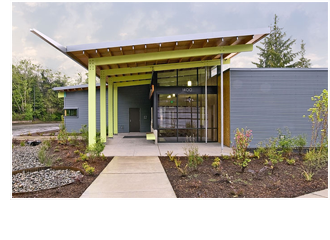 When an institution or corporation, be it a school, a hospital, a city, or an expanding business, decides to enter into a capital improvements project, they are entering into a field that has a language and culture of its own. Architects speak a particular language, as do engineers, code officials, and certainly contractors. Often called Construction Manager or Owner’s Rep, I feel the term Project Liaison more accurately represents the connections with the other players on the Project Team this role provides. When an institution or corporation, be it a school, a hospital, a city, or an expanding business, decides to enter into a capital improvements project, they are entering into a field that has a language and culture of its own. Architects speak a particular language, as do engineers, code officials, and certainly contractors. Often called Construction Manager or Owner’s Rep, I feel the term Project Liaison more accurately represents the connections with the other players on the Project Team this role provides.
The language we use brings us to contracts. There will be at least two contracts that will have to be developed and administered – the one with the architect and the one with the contractor. But there could be others – maybe a testing lab, a geotechnical engineer, or an equipment supplier, for instance. The biggest hurdle, and the one most difficult to understand for most Owners, is that there is no contract between the architect and contractor. The architect is hired by you to supply construction documents that will then be incorporated into your contract with your builder as “supplementary documents to the contract”. So how are these enforced?
Typically, it’s the Architect’s role to outline the rules of administrating that contract that you have with the builder in the Project Manual. These are called General Conditions, and describe to the Contractor the requirements they need to meet in order for the requirements of the contract you have with the Architect be satisfied. That is the only thing hinging the Owner-Builder contract to the Owner’s contract with the Architect.
I have been writing Contract Documents for over 25 years. As a Certified Construction Specifier, I understand these rules of engagement, and I also understand where they go wrong. I am able to review the Architect’s documents, make sure that they accurately and clearly illustrate the design intent, and that they clearly describe your expectations of the construction process. And then, during construction, I am able to maintain a clear, honest and team-oriented approach to the project. I would review the contractor’s schedule as frequently as specified, and in that way be able to assist you in the approval of payments to them.
But it’s more than that: there will be claims. Every project is based on the interpretations of 2-Dimensional graphic representation in creating a 3-Dimensional structure out of specified materials, and every Contractor’s interpretation will be different, especially in a bid situation. Many of these misinterpretations will be from careless use of terminology, or assumption that anyone in the construction industry “knows what I mean by ….” Misinterpretation is easy to offset if the Project Liaison is brought in early, during the design process. A liaison is also helpful in keeping the Architect’s design in line with the Owner’s program, thereby reducing the number of design changes during construction.
|







